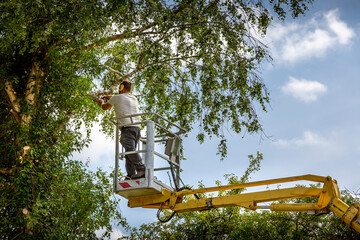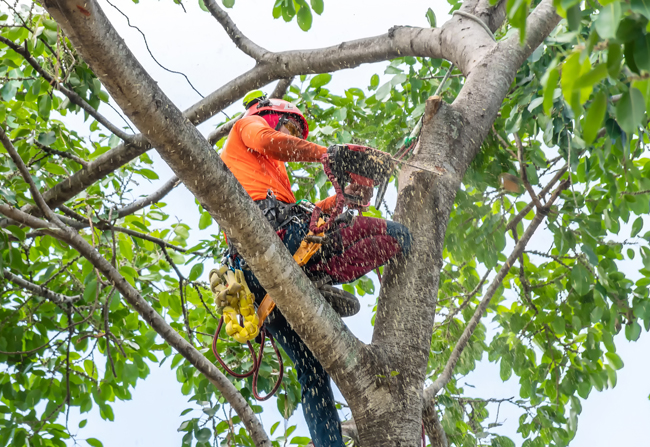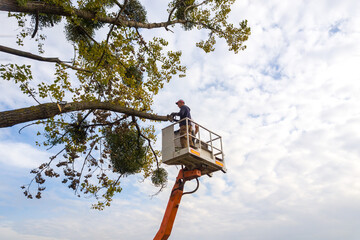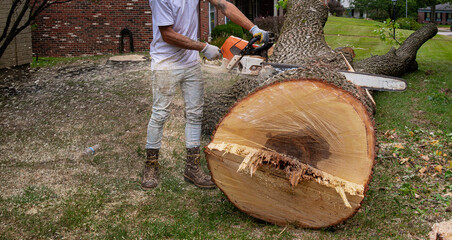Stump Removal: How to Properly Remove a Stump
Stumps are tripping hazards, obstacles to planting, and eyesores. They can also harbor pests and disease. There are several options for stump removal, including grinding, burning, and chemical treatment.
The cost of Austin Stump Removal can vary depending on size, location, and accessibility. Professionals typically charge by the stump or stump diameter and may offer price breaks for multiple stumps.
Stump removal is a difficult job, and it’s important to hire a professional. Homeowners who attempt to remove stumps without the proper equipment can damage their lawns and injure themselves. In addition, the stumps themselves can be tripping hazards. Hiring a professional can also save you money, as they already have the necessary tools. The price of stump removal varies depending on the method used and the size of the stump. The larger the stump, the more expensive it will be to remove it. Depending on the method, the cost can range from under $100 for chemical rotting to more than $400 for manual removal.
When hiring a company to remove your stump, make sure to get an estimate in writing before the work begins. This will help you avoid unanticipated expenses, such as a higher than expected stump diameter or additional fees for debris removal. The stump’s diameter should be measured at ground level, and the entire root system should be taken into consideration when calculating costs. Moreover, the location of the stump and its proximity to buildings or utilities may increase the cost.
Many companies charge by the stump’s diameter rather than by the hour, so a larger stump will be more expensive to remove. Other factors that impact the price include soil condition, root complexity, and stump location. For example, a stump near a building or utility line will be more difficult to access and can take longer to grind than a stump that is farther from such structures.
The best time to have a stump removed is when the tree is felled, which will cost less than having it removed later on. Leaving a stump in the ground can attract beetles, termites, and other wood-boring pests that can wreak havoc on your yard. Moreover, stumps can eventually decay and collapse, causing unsafe walkways.
In some cases, the stump will be too big for grinding, and a partial stump will remain in the ground. Those stumps will require digging to remove the remaining portion of the roots. Afterward, the stump can be covered with mulch or sod. However, this option can be costly since it involves the use of heavy machinery and a considerable amount of labor.
Safety
Stump removal is a process that involves hard manual labor and the use of potentially dangerous tools. It is important to follow the safety guidelines for stump removal so that you can minimize the risks associated with the job. This includes wearing protective gear and assessing the area for any underground utilities. Also, make sure to use equipment that is properly maintained and in good working condition. It is also advisable to hire a professional service for the removal of large stumps and those in challenging areas.
Stumps and root systems are often tripping hazards for pedestrians and pets. They can also attract pests and develop fungi that could affect the surrounding soil. They can also cause damage to sidewalks and foundations. Therefore, it is best to have the stumps removed as soon as possible.
Before starting the stump removal process, it is important to inspect the site thoroughly for any underground utility lines. Make sure to mark them and contact the local authorities if necessary. It is also a good idea to remove any debris or rocks around the stump to create a clean work space. In addition, you should use proper safety precautions when using tools such as a mattock, shovel, and pry bar. If possible, use hand digging instead of heavy machinery to reduce the risk of damaging underground utilities.
The first step in the stump removal process is to dig a hole larger than the stump using a spade or a pickaxe. Then, you can cut the roots and the remaining surface of the stump. Then, you can fill the hole with dirt and compact it to level the ground. After that, you can plant a new tree in the area.
A professional will have a variety of tools for the removal of stumps and roots, including a stump grinder. The grinder will grind the stump and roots, leaving the soil ready for planting. This method is more efficient and safer than other methods. However, it can be expensive and require a lot of time.
Despite the many benefits of stump grinding, it is crucial to consider your safety when performing this task. Ensure that you wear protective clothing, gloves, and sturdy boots. In addition, you should wear eye protection and a helmet if necessary.
Time
A tree stump is an eyesore in your yard and can be a safety hazard for children or pets. In addition, it takes up valuable space that could be used for a garden, a play structure, or another tree. It also attracts insects and fungus that can spread disease to healthy plants and trees. Removing a stump is an important step in preserving the health of your yard.
There are several ways to remove a stump, including mechanical grinding, chemical treatment, and manual removal. Each method has its own time requirements and costs. The most labor-intensive option is manual removal, which involves using axes and shovels to break up the stump and pull it out of the ground. This technique requires more effort and resources than grinding, but it can be the most effective in terms of removing all of the roots.
Chemical rotting is another option for killing a stump, and it can be less labor-intensive than physical removal. The first step is to drill holes into the stump and then pour potassium nitrate or sulfuric acid into those holes. The chemicals will eat away at the stump, and the result will be that it will rot within about four to six weeks.
You can also try dissolving the stump with copper sulfate, which is commonly available in hardware stores. This substance is a powerful defoliant and can be used to kill a stump in about two to three months. It is recommended that you cover the stump with a tarp to keep rainwater from washing away the solution.
Another alternative is to burn the stump. To do this, you should first consult with your local community to ensure that it is safe to do so. If not, you should use a torch or kerosene to slowly burn the stump until it is completely destroyed. Be careful not to let the flame get out of control, or it may spread to nearby plants and trees.
A final option is to fill the hole left by the stump with dirt or plant a new tree in it. Be sure to take precautions when planting a new tree, as the stump’s roots can still damage your lawn or other plants.
Tools
Stump removal is a labor-intensive job that can be done either by digging or using a stump grinder. If you choose to dig, you will need a mattock and a shovel. You may also need a power washer to help wash away dirt and expose roots. Once you’ve exposed the major roots, cut them with an axe or root saw. You can also try using a jackhammer to uproot the stump. If this method doesn’t work, you can use a chain attached to the stump and a pickup truck to slowly pull it up.
Alternatively, you can use a stump grinder to remove the stump and the roots. This is a quicker option, but it’s more expensive than digging. The price of renting a stump grinder will vary depending on your location and availability. Stump grinding requires special skills and safety precautions, so it’s best to hire a professional if possible.
Chemical treatment is another method for removing tree stumps. This is a more convenient option, but it’s not as effective as digging or burning. Moreover, the chemicals can seep into the groundwater and affect the surrounding plants. If you decide to use this method, make sure that the stump is in an area where the chemicals won’t be a problem.
A stump can be an eyesore in your yard and a magnet for pests such as termites, boring beetles, and fungi. It can also compete with healthy trees for water and nutrients, which could compromise their health. Removing the stump will improve your yard’s aesthetic and prevent pests from destroying your garden.
One of the most popular methods for removing stumps is to dig out the entire thing. This process is difficult and time-consuming, but it can be worth the effort if you want to save money on hiring a professional. The first step is to dig around the stump with a mattock’s broad end. Shovel the loosened dirt to expose more of the roots, and continue digging until you reach the stump’s crown. Then, use an axe or root saw to cut off the aerial and in-ground anchor roots. Once you’ve removed the stump, you can plant grass or flowers in the hole and use it as mulch.





